Related Research Articles

Florissant is a city in St. Louis County, Missouri, within Greater St. Louis. It is a middle-class, second-ring northern suburb of St. Louis. Based on the 2020 United States census, the city had a total population of 52,533.

The Patee House, also known as Patee House Museum, was completed in 1858 as a 140-room luxury hotel at 12th Street and Penn in St. Joseph, Missouri. It was one of the best-known hotels west of the Mississippi River.

The Hamilton-Brown Shoe Factory was the first large scale industrial operation in Columbia, Missouri. It was built in 1906-1907 by the Brown Shoe Company, the largest shoe manufacture in the world at the time. It was the first plant built outside of St. Louis and was operational from 1907-1939 The building today has been converted into offices.

Towosahgy State Historic Site (23MI2), also known as Beckwith's Fort Archeological Site, is a large Mississippian archaeological site with a Woodland period Baytown culture component located in Mississippi County, Missouri, United States. It is believed to have been inhabited from c. 400–1350 CE. The site is maintained by the Missouri Department of Natural Resources as a state historic site. The name Towosahgy is an Osage word which means "old town". It is not known if members of the historic Osage people, who dominated a large area of present-day Missouri at the beginning of the 19th century, ever occupied the site. The site was acquired by the Missouri state park system in 1967 and added to the National Register of Historic Places in 1969 as NRIS number 69000113.
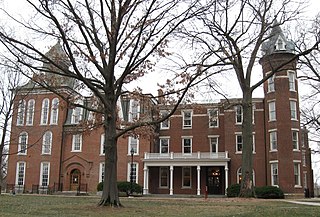
Historic Senior Hall on the Stephens College campus in Columbia, Missouri dates back to 1841, when Oliver Parker bought the eight-acre tract of land on which the College was first located. In 1857, the Columbia Baptist Female College, which later became Stephens College, acquired the building. Until 1918, Historic Senior Hall was the only dormitory at the College. It was the tradition for the President of the Civic Association to occupy the first floor room just north of the Waugh Street entrance. A complete restoration of Historic Senior Hall began in the spring of 1987, and the building was rededicated in the spring of 1990. The historic auditorium was demolished as a cost saving measure in 2000.

The Provo Downtown Historic District is a 25-acre (10 ha) historic area located in Provo, Utah, United States. It is listed on the National Register of Historic Places.

The 1907 Dorris Motor Car Company Building is a factory and industrial warehouse located at what is now 4059 – 4065 Forest Park Avenue in the Central West End neighborhood of St. Louis, Missouri. The building was originally constructed in 1907 as an automobile factory for the Dorris Motor Car Company and was modified in 1909 with the addition of a third story. It was the headquarters and manufacturing facility for the company until 1926, and the company played a significant role in the establishment of St. Louis as an automotive assembly and parts manufacturing center. It was listed on the National Register of Historic Places on February 10, 2000.
Seneca Glass Company was a glass manufacturer that began in Fostoria, Ohio, in 1891. At one time it was the largest manufacturer of blown tumblers in the United States. The company was also known for its high-quality lead (crystal) stemware, which was hand-made for nearly a century. Customers included Eleanor Roosevelt and Lyndon B. Johnson, and retailers such as Marshall Field and Company, Neiman Marcus, and Tiffany's.

The International Shoe Company Building is a historic shoe factory building located at 160 N. Main St. in St. Clair, Franklin County, Missouri. The building was erected in 1922 as a factory for the International Shoe Company. It is a three-story, irregular shaped building with a flat asphalt roof. It has a four-story elevator tower. The factory closed in 1982.
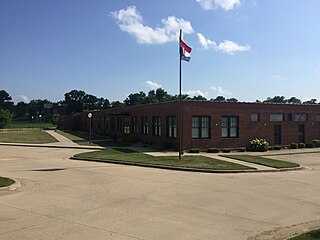
The International Shoe Company Building is a historic factory building located at 665 Missouri Avenue in West Plains, Howell County, Missouri. The one-story building consists of two wings, one constructed in 1946 and another in 1952. The 1946 wing contains 41,400 square feet; and the 1952 wing contains 20,736 square feet. The building was erected as a factory for the International Shoe Company. The factory closed in 1993.
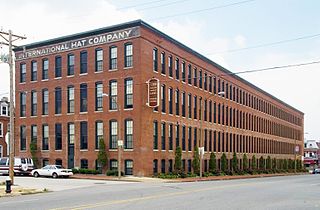
Brown Shoe Company's Homes-Take Factory, also known as the International Hat Company Warehouse, is a historic building location at 1201 Russell Boulevard in the Soulard neighborhood of St. Louis, Missouri. Built in 1904, by renowned architect Albert B. Groves, the building was originally a factory for the Brown Shoe Company, based in St. Louis. In 1954, the factory was subsequently converted into a warehouse by the International Hat Company. The site has been recognized as a testament to Grove's architectural expertise in the principles of factory design, namely technical advances in layout planning, operational efficiency, and employee safety. Additionally, the factory epitomizes the early 20th century cultural transformation and socio-industrial development of St. Louis into a manufacturing powerhouse. In particular, the Brown Shoe Company is recognized as a principal player in challenging the 19th century dominance of the New England shoe industry. This significantly contributed to the early 20th century sobriquet of St. Louis as the city of "shoes, booze, and blues." The Brown Shoe Company's Homes-Take factory is considered to be among the pioneering industrial facilities of this historic transformation.

The Bonaparte Pottery Archeological District is a nationally recognized historic district located in Bonaparte, Iowa, United States. It was listed on the National Register of Historic Places in 1999. At the time of its nomination it contained four resources, which included one contributing building, one contributing site, and two non-contributing buildings. The contributing resources include the remains of two kilns from Bonaparte Pottery, which operated from 1866 to 1895. It also includes the factory building (1876) that replaced a building that was destroyed in a fire in November 1875. The non-contributing resources include two buildings that are associated with the lumberyard that took over the site after the pottery closed. They were built after the period of historical significance.
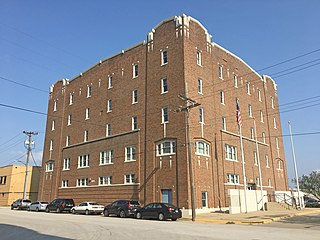
Wheeling Corrugating Company Building, also known as Cook Composites and Polymers (CCP), is a historic factory building located at North Kansas City, Missouri. It was built in 1920, and is a five-story, six bay, rectangular reinforced concrete building faced in brick with cut stone trim. A one-story, concrete block addition was built about 1950. It produced corrugated galvanised iron for roofing.

Hamilton-Brown Shoe Company Building, now the Selwyn Place Apartments, is a historic factory building located at Boonville, Cooper County, Missouri. It was built in 1919 by the Hamilton-Brown Shoe Company, and is a four-story, rectangular brick industrial building with a flat roof. The roof is framed by a corbelled parapet capped with tile coping. The building features a five-story elevator tower and four-story tower which housed restrooms. Also on the property are the contributing power plant building and oil house.

New Haven Residential Historic District is a national historic district located at New Haven, Franklin County, Missouri. The district encompasses 26 contributing buildings a predominantly residential section of New Haven. The district developed between about 1857 and 1945, and includes representative examples of Italianate, Queen Anne, Colonial Revival, and Bungalow / American Craftsman style architecture. Notable buildings include the Langenberg Hat Factory, William H. Otto Furniture Store, Central Hotel, Dr. John S. Leewright House (1857), Lillie Patton House, Richard Schure House, George Wolff Sr. House (1880), Edward Hebbeler House (1916), and Emil Wolff House.

Louis Wehrmann Building, also known as the John and Amy Mintrup House, is a historic commercial building located at Washington, Franklin County, Missouri. It was built about 1857, and is a 2+1⁄2-story, five bay, German Neoclassical style brick building in the Klassisismus form. It features a two-story neoclassical pilasters and an ornamental ironwork balcony over the central front door.
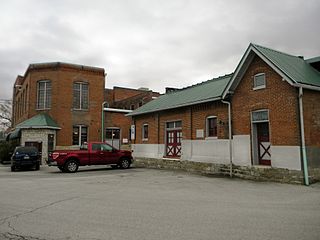
John B. Busch Brewery Historic District is a historic brewery complex and national historic district located at Washington, Franklin County, Missouri. The complex developed between about 1855 and 1917. It includes the main brewery complex and two ice houses. The main brewery complex that is a multi-storied complex of buildings with five main sections. Much of the complex dates to 1888, with additions made in 1917. The cellars date to about 1855. The brewery closed in 1954.

Woods–Evertz Stove Company Historic District, also known as General Wesco Stove Company, is a historic industrial complex and national historic district located at Springfield, Greene County, Missouri. The district encompasses six contributing buildings associated with a large cast iron stove manufacturer. The district developed between about 1904 and 1953, and all six buildings are in a simple industrial, factory style, with minimal architectural embellishment and have flat, low-pitch and gabled roofs.

Odessa Ice Cream Company Building is a historic commercial building and ice cream factory located at Odessa, Lafayette County, Missouri. It was built in 1929, and is a two-story, three bay by five bay, clay block and brick building. The rear section was raised to two stories about 1946. Odessa Ice Cream was the official ice cream at the Missouri State Fair in the 1930s.
The Julius and Sophia Norton House is a historic house at 300 Pleasant Street in Bennington, Vermont. Its main block, completed in 1846, is one of the state's finest examples of Greek Revival architecture. It was listed on the National Register of Historic Places in 2021.
References
- 1 2 "National Register Information System". National Register of Historic Places . National Park Service. July 9, 2010.
- ↑ Pebble Sheals (April 2000). "National Register of Historic Places Inventory Nomination Form: John Glaser Pottery Factory" (PDF). Missouri Department of Natural Resources. Retrieved December 1, 2016. (includes 8 photographs from 2000)

